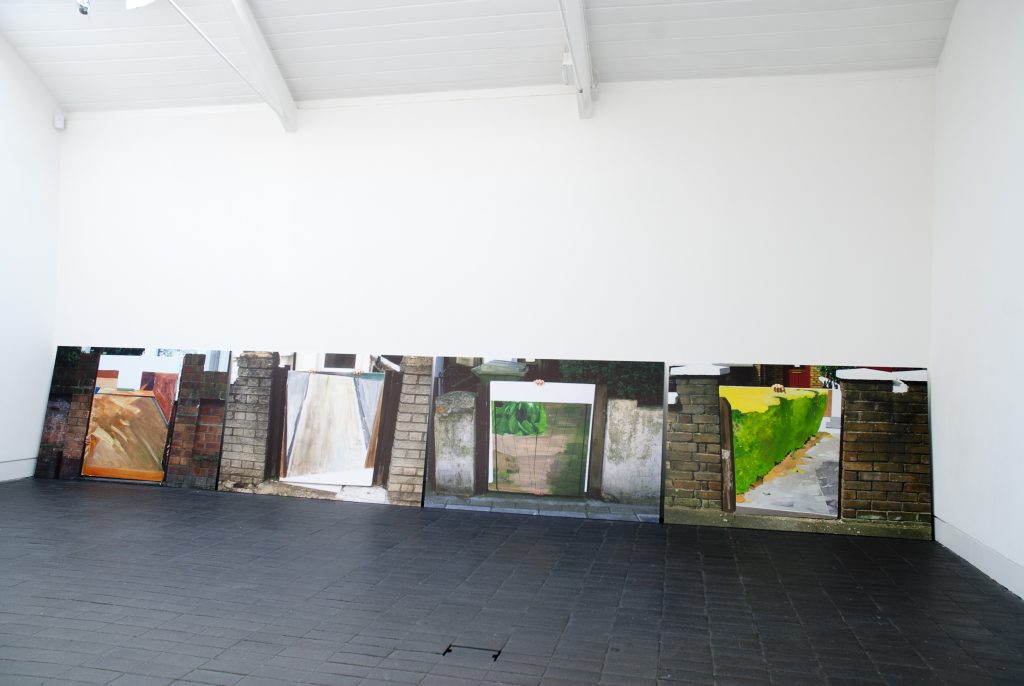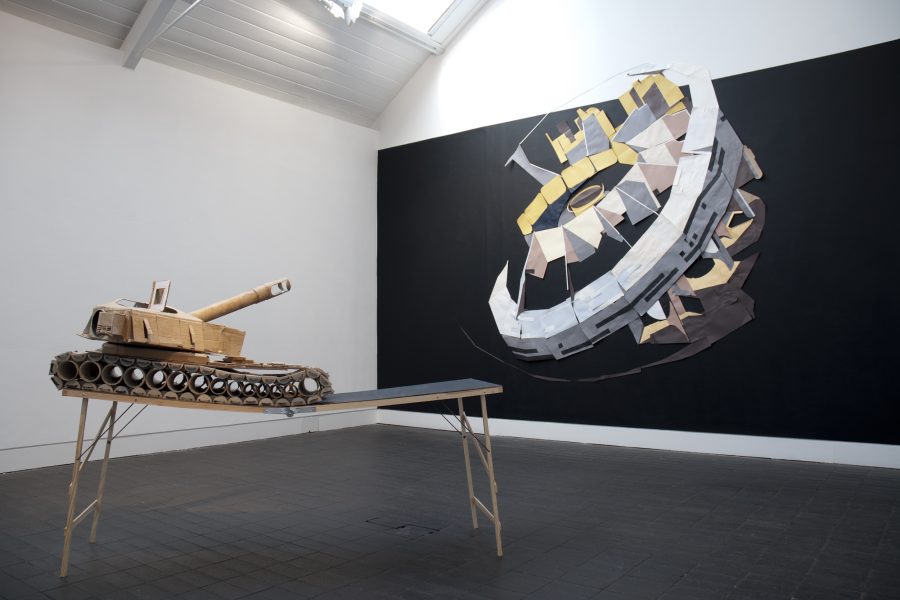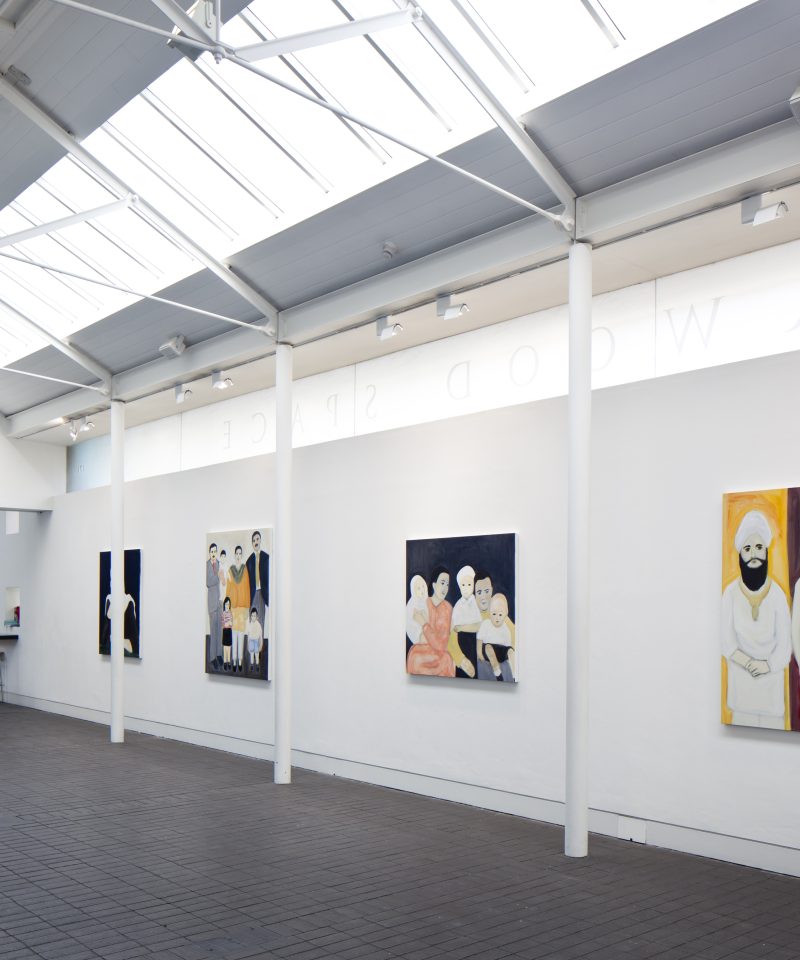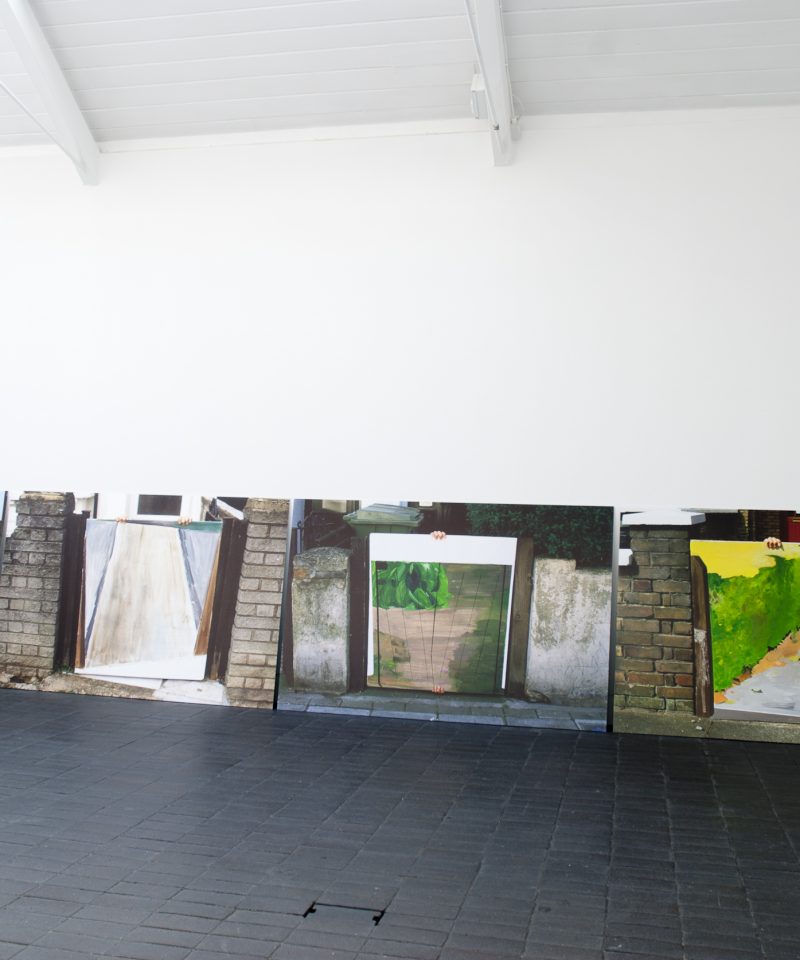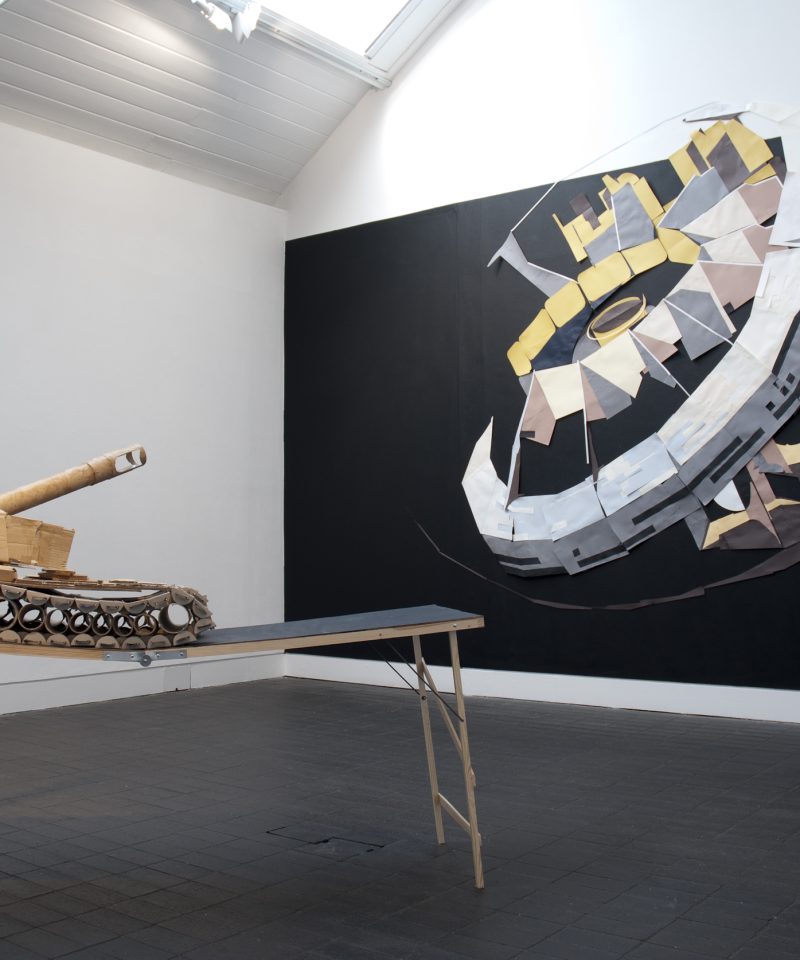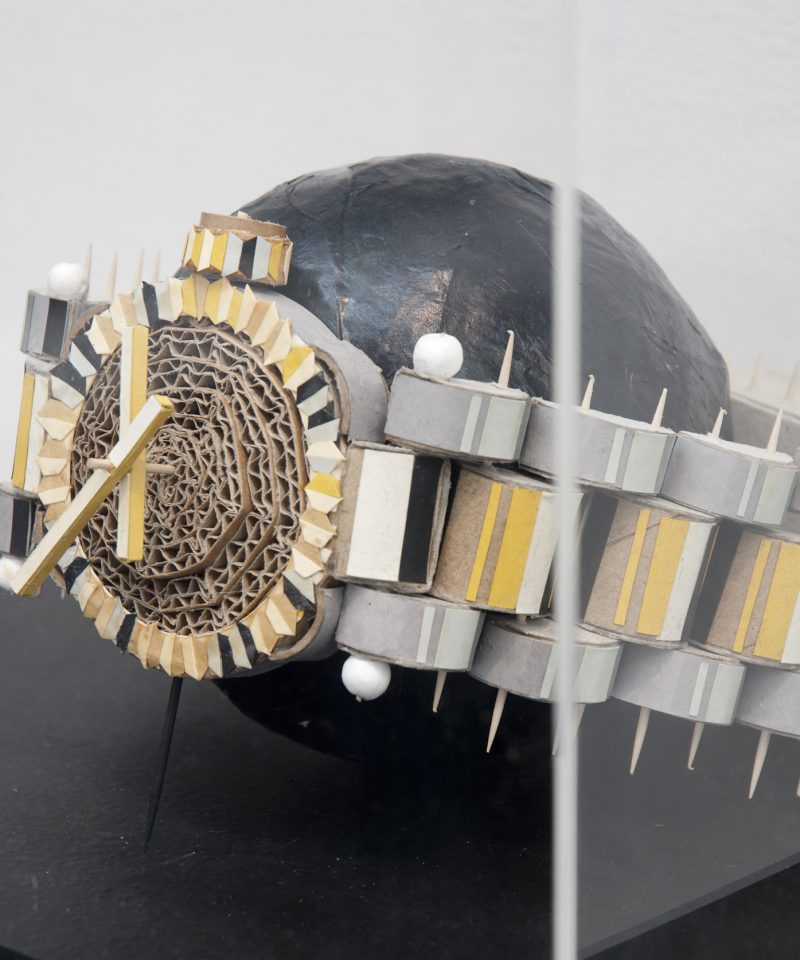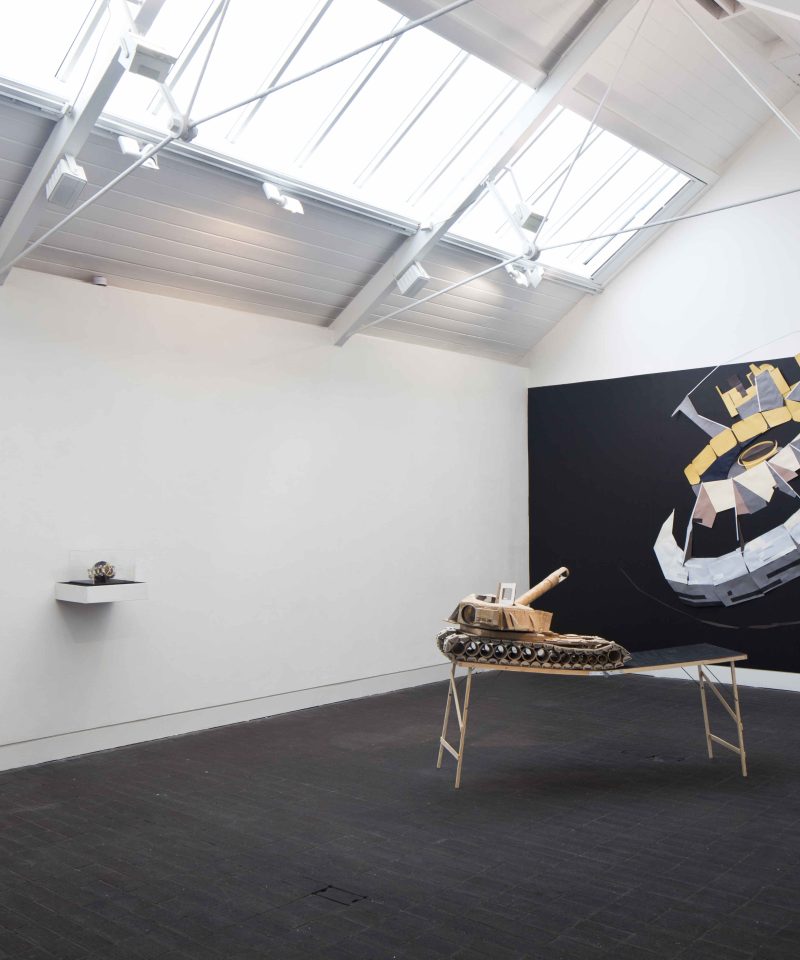The paintings in your photographs are themselves based on photographs of domestic gateways. What was it that initially drew you to these sites?
When you’re drawn to something you don’t always know why, but I had been looking at lots of different things and was drawn to the shifting contours of the images that appeared between people’s gateposts as I cycled past.
Are these gateways that you pass regularly or did you go out looking for them?
More often they’re gateways I pass regularly, sometimes noticing one a few times before stopping to photograph it. I take hundreds of photos of gateways but only use a few to help make the painted images on cardboard that end up being photographed in gateways.
So there wasn’t some kind of grand concept behind the gateways?
I didn’t start off thinking I would make some work about gateways or about the thresholds between pubic and private space. I’ve gone up lots of blind alleys with my work but the fact that I didn’t start off thinking about these ideas doesn’t mean that they aren’t in the work. If I had found I was making work that didn’t have all these other things going on then I may not have been interested enough to carry on.
And what about the photographs you choose to paint, why choose one image over another?
I’ve tried using lots of images that haven’t worked. I’ve got some really bad looking bits of cardboard in my studio and photographs that look absolutely terrible! There’s a lot of wastage.
Was it always your intention to place the paintings back into gateways, or had you planned to show the paintings themselves?
These bits of cardboard were deliberately sized and painted to be inserted across the gateways of typical London terraced houses. I wanted to see the processing and transformation that had gone on in the painting by putting the painted surfaces back into the same type of place – to see what the painting does next to other constructions.
But the paintings aren’t placed back into the sites from which they originate are they?
No, that would become too circular. When I’m painting on the cardboard I am only making a section of an image without knowing precisely what the rest of the image will look like – which gateway will be used. Some of my attempts maybe don’t work because the paintings are too complete. One of the things I try to do, in this partly blind process, is to resist making too complete an image. Perhaps the fact that the process often doesn’t work – a painting only seems to be activated across certain gateways, and I have to keep trying until it works or is abandoned – is a kind of ‘proof’ that the idea by itself isn’t interesting, or doesn’t work in itself. Something has to happen materially.
The element that instantly catches the eye are the hands, are they yours?
No, I have someone helping me. The hands bring up issues to do with where you can and can’t put things and about having the power to change a surface. It’s about the tactility of human agency, about being able to actually move things around in the world and using your hands to touch things and to change them. But it’s difficult to get permission to fix something somewhere – you can hold something in place, carry or wear something, but you can’t necessarily fix it somewhere permanently. I found that a human can be a very good mechanism for holding something in place quite exactly. Then, when you look at the work, all kinds of questions arise: ‘who is that person behind there? Are they trapped in there? Is it the artist hiding behind their work? Am I being kept out or welcomed in?’
What happens to the pieces of painted cardboard once you’ve taken the photograph?
Nothing, I’m keeping them in my studio. They’re not works in themselves; they’re a bit like props for my work, surfaces within the paintings.
So surface is something that is particularly important in your work?
Yes. Surfaces are the bit of the world that we see and touch and from where we get a lot of information about how something came to be the way it is, who it belongs to, what feelings are induced.
But these surfaces are not available for us to touch or experience, we only see their image in the photographs.
The photographs are attempts at bringing together those surfaces and presenting them for someone to see. I didn’t set out to make a conceptual point about the relationship between painting and photography, rather photography is a way to get those surfaces together.
Some artists use photography to document actions, do you consider your work to be at all performative?
I’m never sure what performative means, I find the concept confusing. But the photographs are definitely not documention. The photographs are the work. They’re paintings that have used photography rather than being photographs of paintings.
So how do you answer the criticism of some who say that what you’re doing isn’t really painting?
When I say that these photographs are paintings I’m making quite a specific claim: in this case, the bits of card with paint on them are activated using photography. I do move a substance around on a surface a lot as a starting point but it’s not necessary for me to claim that I am a painter.
How useful then do you think the terms ‘painting’ and ‘painter’ actually are?
I would like to think about this question more, and in relation to the fact that there are still departments, including painting departments, in art colleges. Painting is a way to touch something – a point of contact. It’s an appendage of substance that allows me to do things I can’t do with my body alone.
